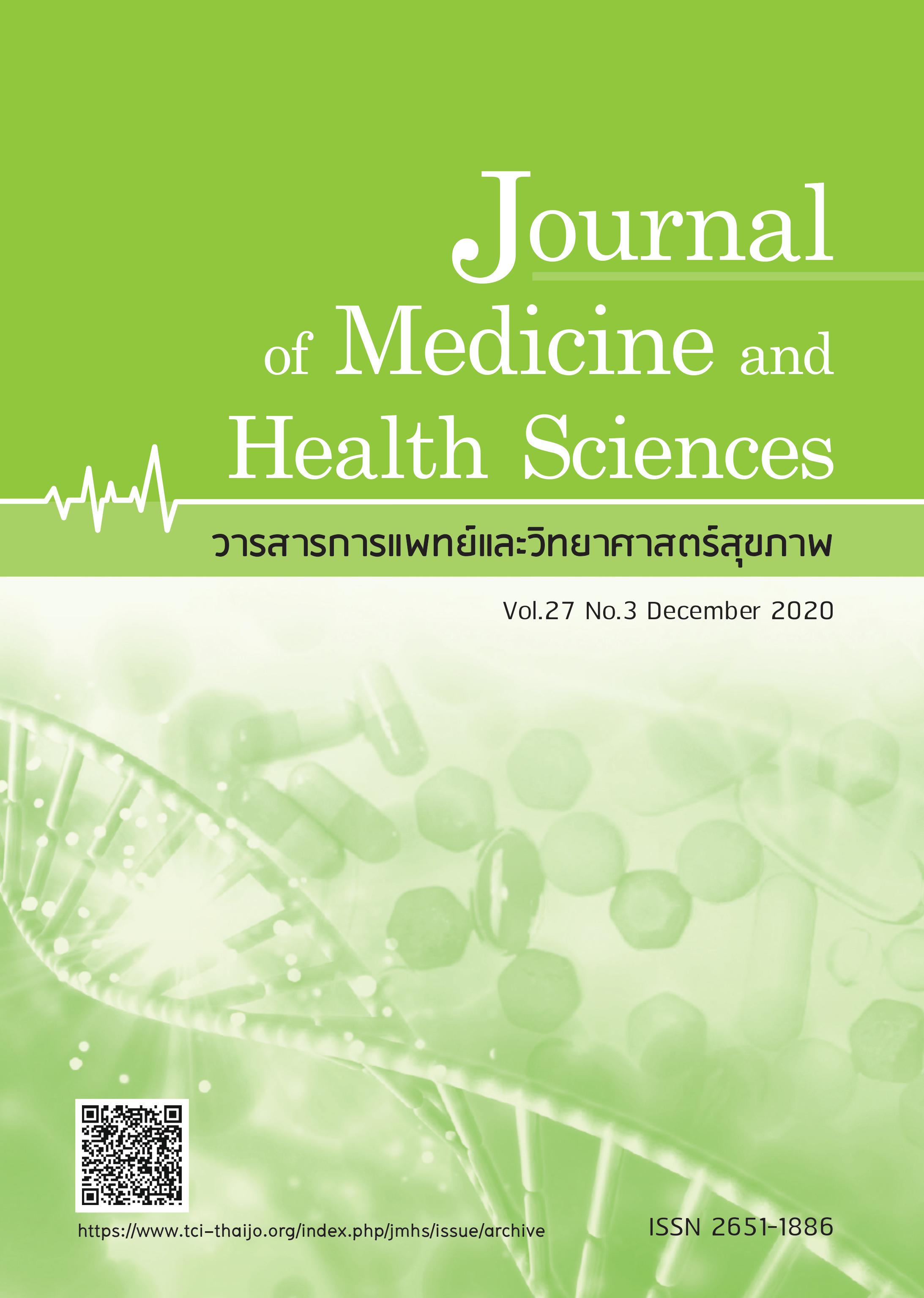Improving health literacy among elderly
Keywords:
health literacy, elderly, health services, improveAbstract
Abstract
Low health literacy among elderly has been linked to poor health behaviours and poor health outcomes, which can adversely affect the quality and cost of health care services. This article was to presents of the definition, components, and level of health literacy, health literacy among elderly, and strategies to improve health literacy among elderly, as follow: 1) Improve the usability of health information, including improve the information appropriate for elderly, iImprove the information easy to use, limit the number of messages, use plain language, focus on action, and speaking clearly and listening carefully 2) Improve the usability of health services, including improve the usability of health forms and instructions, improve the accessibility of the physical environment, and establish a patient navigator program, and 3) Build knowledge to improve health decision making, including improve access to accurate and appropriate health information, facilitate healthy decision-making, and partner with educators to improve health curricula. This article contribute to understanding the strategies and identifying action guidelines for improving health literacy, improve health outcomes, and well-being of elderly.
References
2. Cho YI, Lee SY, Arozullah AM, et al. Effects of health literacy on health status and health service utilization amongst the elderly. Soc Sci Med 2008;66(8):1809-16.
3. World Health Organization Regional Office for Europe. Health literacy: the solid facts. Copenhagen: World Health Organization Regional Office for Europe; 2013.p.3
4. Nutbeam D. Health literacy as a public health goal: a challenge for contemporary health education and communication strategies into the 21st century. Health Promot Int 2000;15:259-67.
5. Nutbeam D. The evolving concept of health literacy. Soc Sci Med 2008;67(12):2072-8.
6. Nutbeam D. Defining and measuring health literacy: what can we learn from literacy studies? Int J Public Health 2009;54(5):303-5.
7. Kaeodumkoeng K, Thummakul D. Health literacy promoting in aging population. J Health Sci Res 2015;9(2):1-8.
8. Ishikawa H, Takeuchi T, Yano E. Measuring functional, communicative, and critical health literacy among diabetic patients. Diabetes Care 2008;31(5):874-9.
9. Suka M, Odajima T, Kasai M, et al. The 14-item health literacy scale for Japanese adults (HLS-14). Environ Health Prev Med 2013;18(5):407-15.
10. van der Vaart R, Drossaert CHC, Taal E, et al. Validation of the Dutch functional, communicative and critical health literacy scales. Patient Educ and Couns 2012;89(1):82-8.
11. Fransen MP, Van Schaik TM, Twickler TB, et al. Applicability of internationally available health literacy measures in the Netherlands. J Health Commun 2011;16(sup3):134-49.
12. Reisi M, Mostafavi F, Javadzede H, et al. The functional, communicative, and critical health literacy (FCCHL) scales: cross-cultural adaptation and the psychometric properties of the Iranian version. Iran Red Crescent Med J 2017;19(1):e29700.
13. Dwinger S, Kriston L, Härter M, et al. Translation and validation of a multidimensional instrument to assess health literacy. Health Expect 2015;18(6):2776-86.
14. U.S. Department of Health and Human Services. Quick guide to health literacy. Rockville, MD: Office of Disease Prevention and Health Promotion; 2015, p.12-27.
15. Thangkratok P, Chaokak S, Mongkoldee P,et al. Salty eating behavior of aging in Bang-Plad District, Bangkok. KKU J for Public Health Res 2016;9(3):71-8.
16. Thangkratok P, Poohomjarean H, Rinsathorn S. Effects of AIDET communication program on satisfaction among patients and families in cardiac care unit, Bangkok Heart Hospital. Songkla Med J 2017;35(4):335-42.
17. Doak CC, Doak LG, Root JH. Teaching patients with low literacy skills. 2nd ed. Philadelphia, PA: J.B. Lippincott Co; 1996.
18. Mazur B. Revisiting plain language. Technical Commun 2000;47:205-11.
19. Cutts M. Unspeakable acts revisited. Infor Design J 1998;9(1):39-43.
20. Baur Ce. Using the internet to move beyond the brochure and improve health literacy. In: Joanne G. Schwartzberg, Jonathan B. VanGeest, Claire C. Wang, editors. Understanding Health Literacy.1Sted. Chicago: American Medical Association; 2005:141-54.
21. Thangkratok P, Cheevakasemsook A, Angsuchoti S. Digital competency of Thai professional nurses. J Nurs Sci Health 2019;42(1):1-12.
22. Schillinger D, Piette J, Grumbach K, et al. Closing the loop: physician communication with diabetic patients who have low health literacy. Arch Intern Med 2003;163(1):83-90.
23. Rudd RE, Renzulli D, Pereira A, et al. Literacy demands in health care settings: the patient perspective. In: Joanne G. Schwartzberg, Jonathan B. VanGeest, Claire C. Wang, editors. Understanding Health Literacy.1Sted. Chicago: American Medical Association; 2005.p69-84.
24. Helen W. Wu, Robyn Y. Nishimi, Christine M. Page-Lopez, Kenneth W. Kizer, editors. Improving patient safety through informed consent for patients with limited health literacy. Washington, DC: National Quality Forum; 2005.
25. California HealthCare Foundation. Consumers in health care: the burden of choice. 2005.
26. U.S. Department of Health and Human Services. Making health communication programs work. Washington, DC:National Cancer Institute ; 2002, p. 248.
27. Langputeh A, Suden F, Thangkratok P. Effects of a self-management program for patients with chronic obstructive pulmonary disease in medicine ward, Khuandon Hospital, Satun Province. Srinagarind Med J. 2018;33(4):346-50.
28. U.S. Department of Health and Human Services. Communicating health: priorities and strategies for progress. Washington, DC: National Cancer Institute; 2003.p.51-2.



